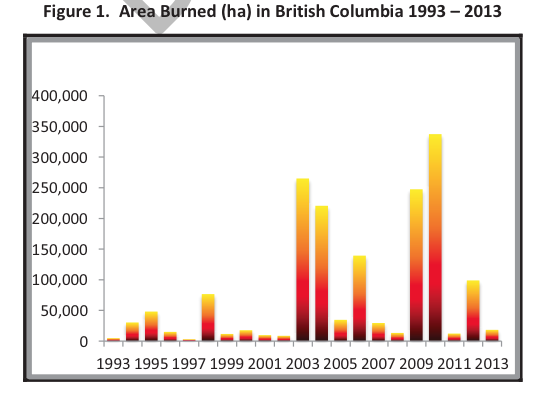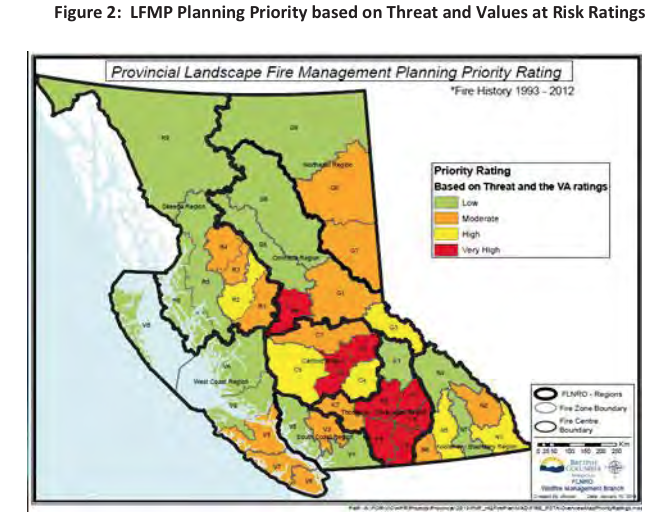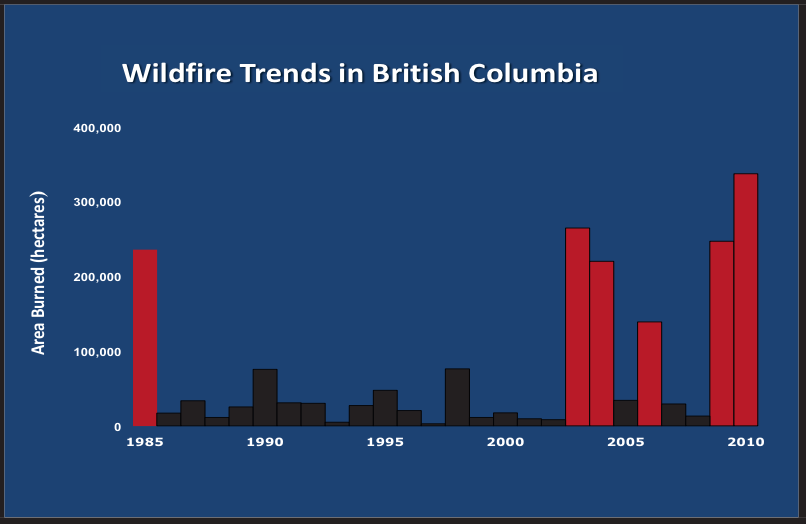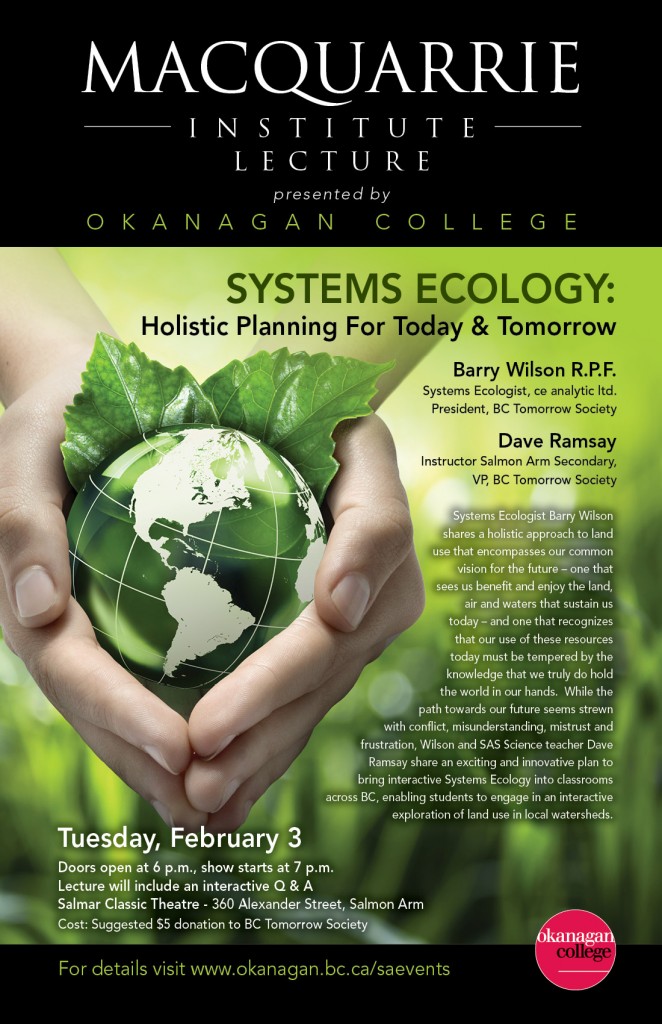 Valley fog and lack of snow in December may become the new normal
Valley fog and lack of snow in December may become the new normal
Looking forward to the New Year can spark us to ponder about what the future holds for the Shuswap. Certainly the old adage, “be careful about what you wish for” rings true with this week’s “snowmaggedon” when many skiers yearned for snow after our green solstice. Will we face more extreme weather patterns that trigger damaging erosion events? Will the unanticipated drop in oil prices impact the flow of Alberta money into our economy? And will we once again avoid destructive wildfires or massive algae blooms?
Land and resource use or misuse does affect the future, as unsustainable use means there will be less resources available for future generations or some resources and values will be damaged or destroyed. Both provincial and federal governments have decreased oversight and handed responsibility for how resources are used over to companies, thus planning is primarily done behind closed doors without public involvement. One way to reverse this trend is to provide opportunities for students to better understand sustainable resource use and thereby become more mindful of how we care for the environment.
Last year, local teachers and resource specialists organized the BC Tomorrow Society to develop an online tool for teaching sustainability and holistic thinking that encompasses many potential variables. The group is modelled after the Alberta Tomorrow Society, whose satellite image-based future simulation website is being successfully used in classrooms throughout the province. The plan is to modify the existing Alberta platform to incorporate local issues and then pilot the tool in the Shuswap before it is expanded for use throughout the province.
Given that young people today are increasingly connected to digital devices, the idea is to develop a tool that operates like a video game to foster student involvement. Five land uses will be included, forestry, agriculture, tourism, settlement and transportation. The goal will be for students to develop a plan that best balances land use in a way that optimizes resource availability in the future and minimizes the risks to key values.
BC Tomorrow organizers, including Barry Wilson, Dave Ramsay and Dave Nordquist, also plan to develop a tool that does more than virtual planning by adding a feature that allows students to make observations and take measurements using a smartphone app. This data would then be incorporated into the modeling of how ecological systems change over time, such as the water quality in local creeks and rivers and allow students to engage in an interactive exploration of land use.
The society has many challenges ahead, including raising the funds needed for the computer programing required and improving the existing tool to better reflect the impact of all the variables we face in the future. One key addition would be to include the wild cards, especially the impacts of climate change.

As the warming of the planet continues to increase exponentially due to continued rise in atmospheric carbon dioxide, we can expect more extreme weather events, wildfires, droughts, floods, landslides, forest pests and diseases, and other impacts that we can barely predict. In fact, sustainable resource planning now requires more than balancing uses, it also means anticipating impacts and thus making efforts to adapt.
For example, a recent BC government action plan estimates that the size, number and severity of wildfires could double by 2080 and recommends all communities develop fire management plans and proactively reduce interface sources of fuel.

Economic factors also create wild cards, as a financial downturn could decrease demand for resources, just as upturns create more demand, including increases in settlement and tourism. And the pressure for more settlement would occur when the oceans rise and people need to move. Perhaps one of the biggest wild cards would be the potential for a major railway accident that could dump deadly toxins into Shuswap Lake. Any effort to create a planning tool for the future must incorporate the potential for any one or more of these wild cards, or the exercise will not accurately reflect all that we face in the future.
 The public will have a great opportunity to learn more about the BC Tomorrow Society on Tuesday, February 3rd at 7 pm when Wilson and Ramsay present the lecture at the Salmar Classic, “Systems Ecology: Strategic Planning for Today and Tomorrow.” This lecture is sponsored by the MacQuarrie Institute and presented by Okanagan College.
The public will have a great opportunity to learn more about the BC Tomorrow Society on Tuesday, February 3rd at 7 pm when Wilson and Ramsay present the lecture at the Salmar Classic, “Systems Ecology: Strategic Planning for Today and Tomorrow.” This lecture is sponsored by the MacQuarrie Institute and presented by Okanagan College.
POSTSCRIPT
You might think that winter enthusiasts would be overjoyed by the massive dump of snow earlier this week, however the weather quickly warmed up and an inversion kicked in turning the snow to mush. This was followed by freezing rain and the resulting mess meant that skiing was no longer desirable. Such is the status of our weather patterns now, as the planet continues to warm up.
Perhaps the greatest certainty about our future is actually uncertainty, as we can no longer depend on normal weather patterns. Expectations of heat in the summer and cold in the winter could be no more. And since so much of what we do here in the Shuswap is dependent on stable weather patterns, we will need to revise our planning to incorporate the growing uncertainty regarding the weather.
Learn more about the adaptation planning for wildfires in B.C. by reading this document: Climate Change Adaption Action Plan for Wildfire Management, 2014 – 2024








